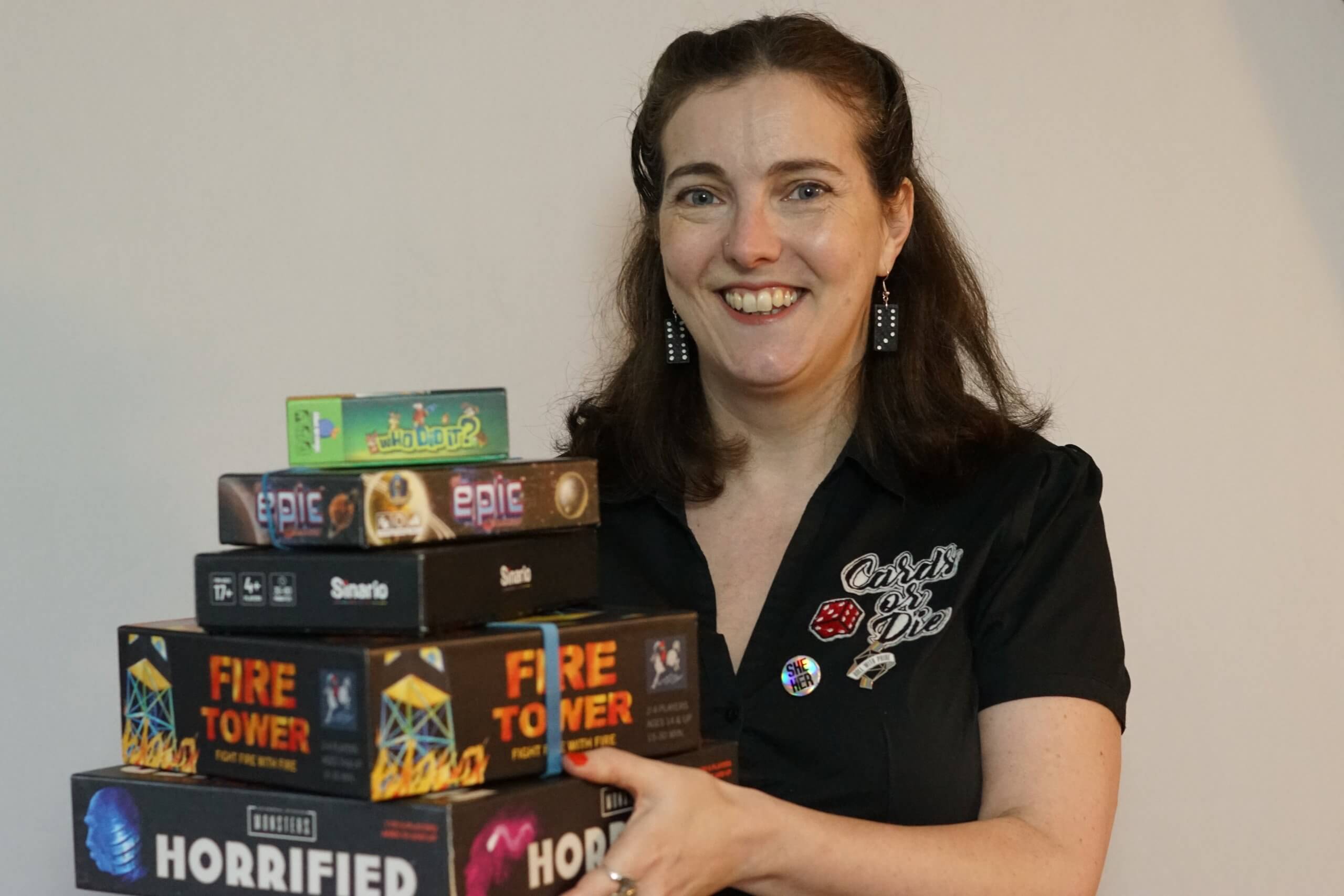As part of Heritage Week this year I ran an event celebrating all things Waddingtons. Waddingtons started life as a printers – initially focusing on printing theatre programmes. They moved onto playing cards and then boardgames. I have a collection of around 50 Waddingtons games and these are some of the ones we played on the night:
Waddingtons Playing Cards
These gorgeous card decks are both from 1933. The first one comes in a little book titled ‘Idle Moments’
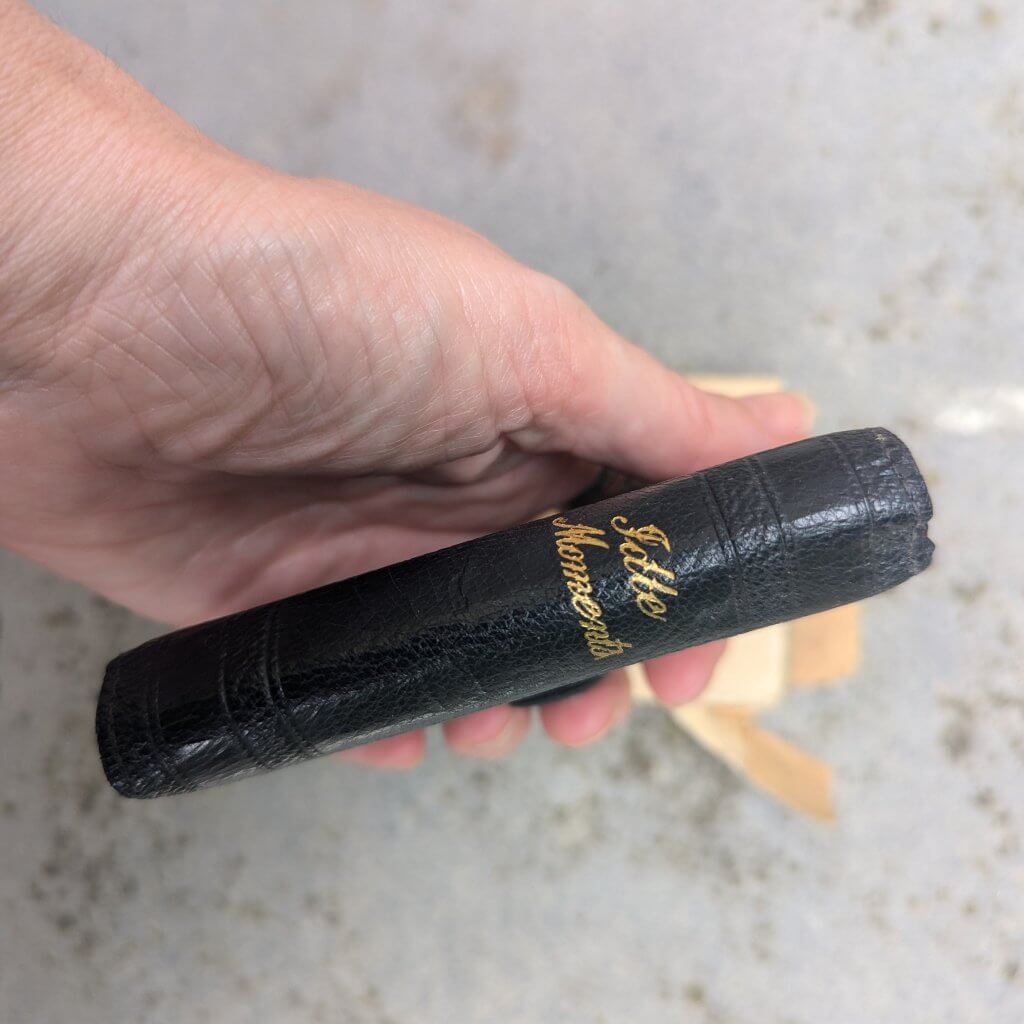
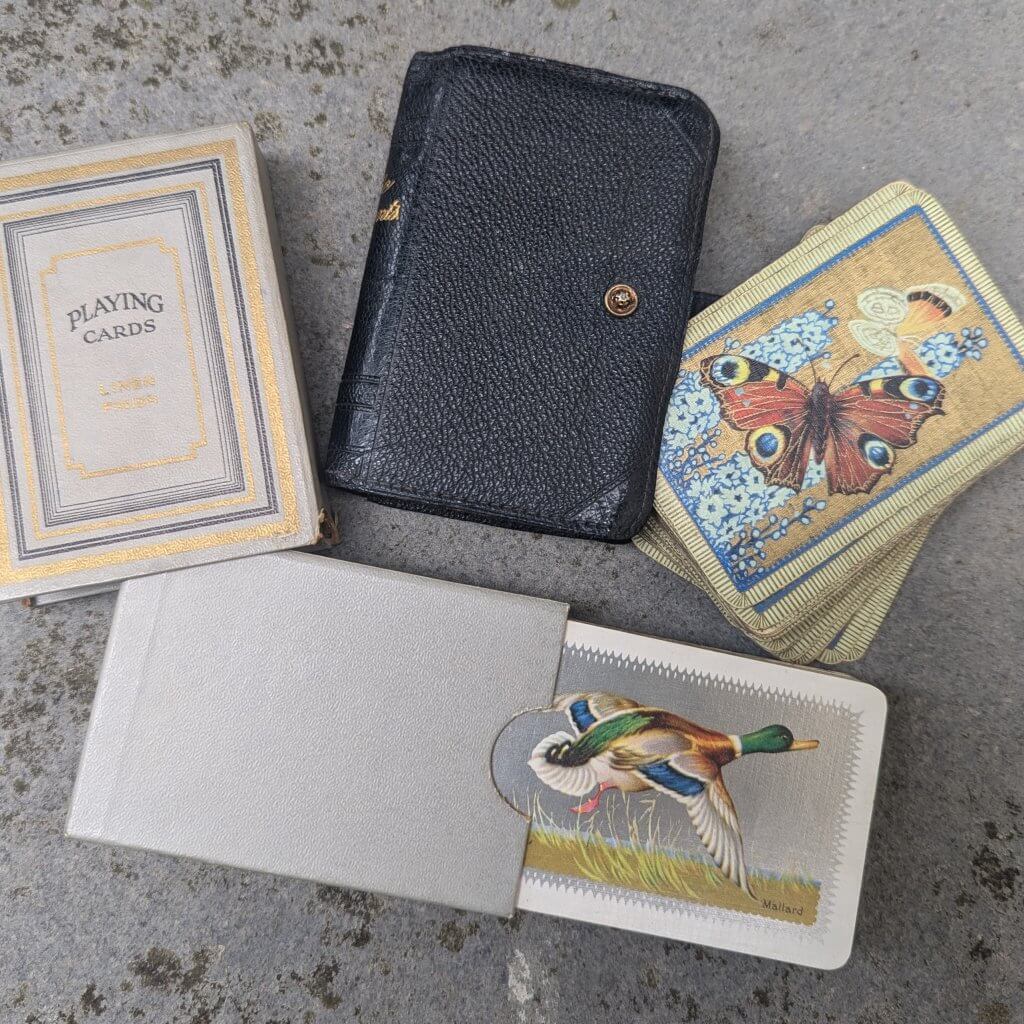

Cards were often associated with gambling which was frowned upon in many households. Storing them in this bible like case would be a way of hiding them from prying eyes. When I googled this case a similar one came up entitled ‘Let us play’ which is brilliant.
Both decks have an ornate ace of spades. When stamp duty on playing cards was introduced in the early 1700s, each printing house had to buy their Ace of Spades stamp from the government bearing the insignia of the printing house. The elaborate designs made forgeries more difficult. The tax remained in place until 1960. I always look for the Ace of Spades in vintage packs.
They are both linen finish and have clearly been well loved. A friend also found me a Waddingtons book of card games which is the perfect accompaniment to all my playing cards.
Waddingtons did also do specific games like Newmarket and Bezique where you get the cards and tokens needed for that game along with the rules.
Cluedo Super Sleuth
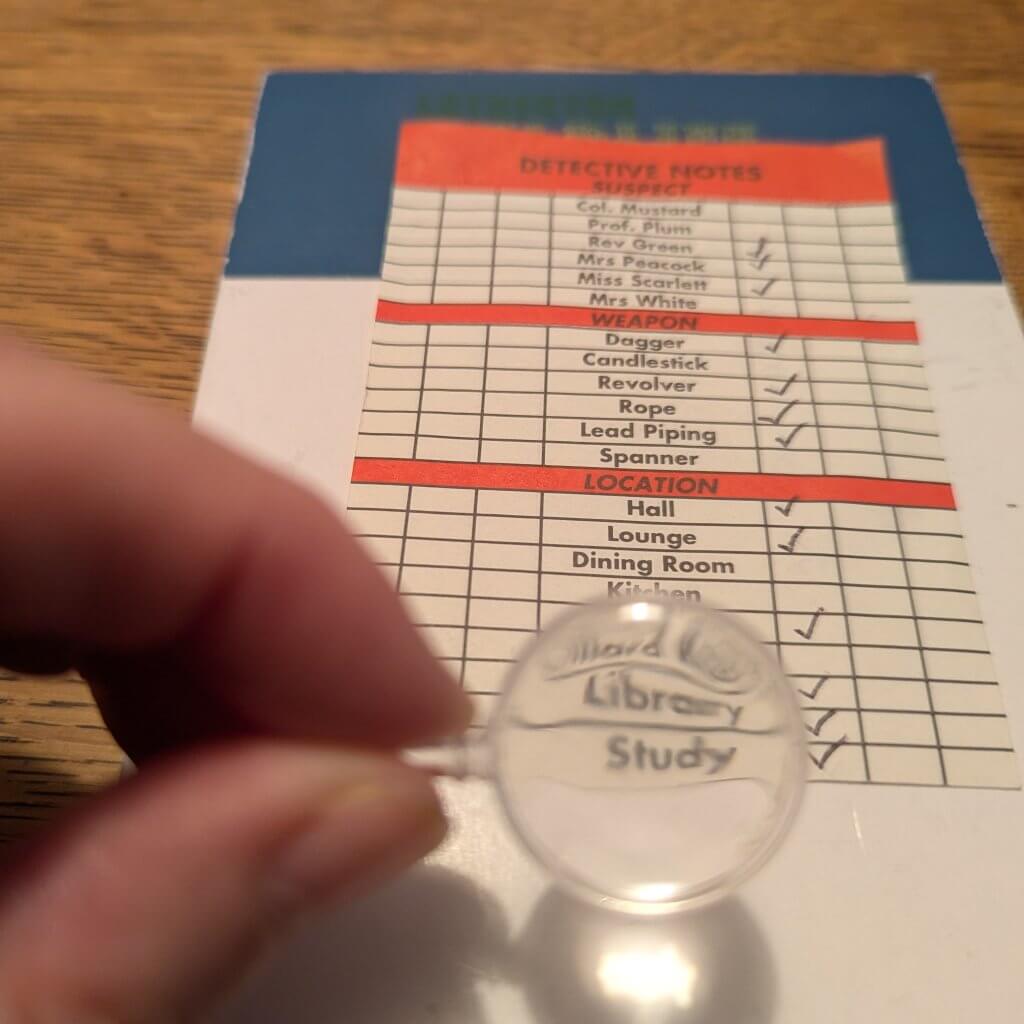


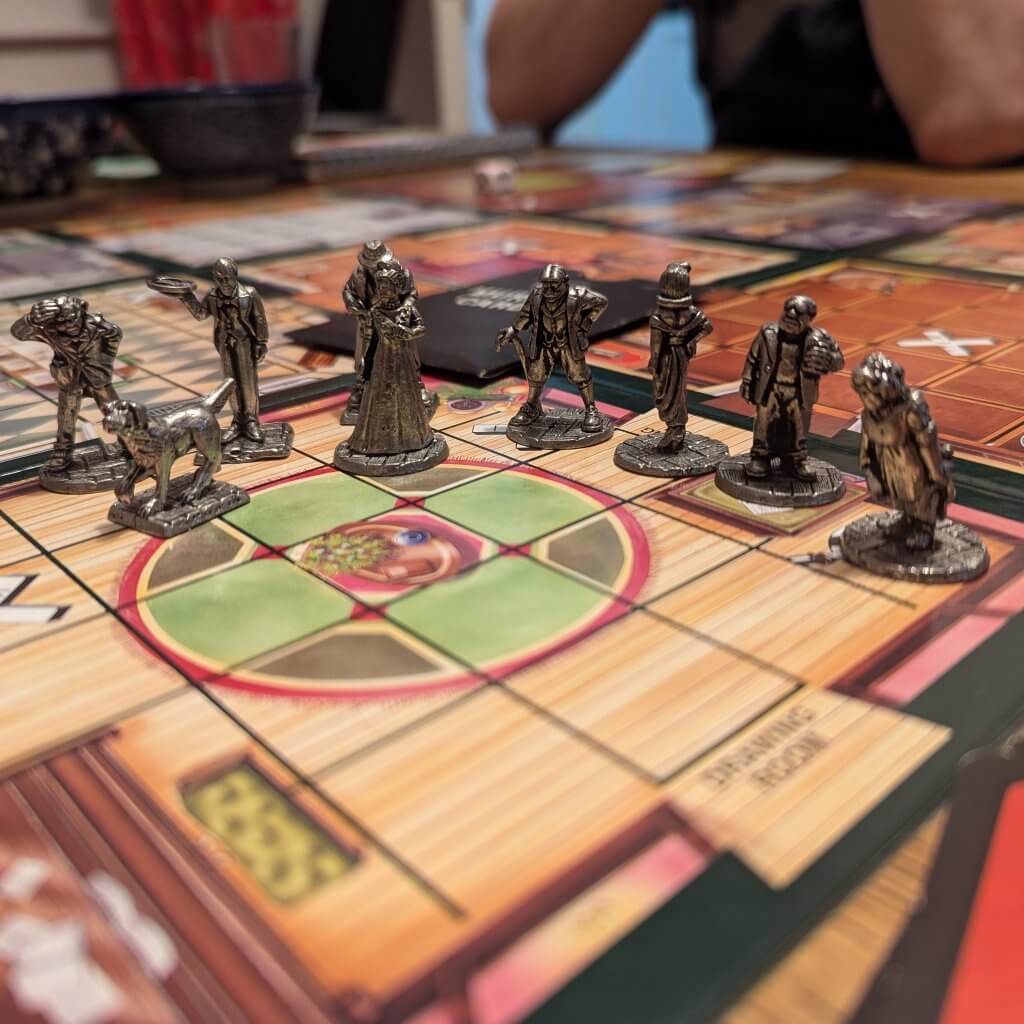
I found Cluedo Super Sleuth in a charity shop and it’s brilliant. Cluedo was one of Waddingtons best sellers and Cluedo Super Sleuth is very similar but it’s different enough. I’m confident that if you love Cluedo you’ll love this.
Before I tell you what I loved about it let’s take a moment to remember how Cluedo plays. You start by placing 3 cards in an evidence envelope: a murderer, a weapon and a location. Then, you deal out the rest of the cards to the players (meaning, despite what it says on the box, you need at least 3 players). You then roll dice and move from room to room asking one player at a time if they have a certain weapon, murderer or location in their hand. By a process of deduction and elimination you can work out what is in the envelope.
In no particular order here are the good bits:
- it plays 2-6 people
- cool mini figures
- you start with no cards so you can’t rule anything out until you’ve collected some clues. That means you don’t just move from room to room repetitively trying to rule things out.
- the rooms are revealed during the game and each room contains clues and item cards which you can use to help you investigate
- there are non-player characters: a dog, a butler and the detective. They can both help and hinder your investigations and can be used to obstruct other players.
- event cards which can be good or bad are included. Most of which allow you to move up to six spaces on that turn.
- the dice has a 3, 4, 5, 6, and two event symbols which means you move around the board much faster
- the magnifying glasses actually work
- it uses all the familiar characters, weapons and rooms as well as three additional rooms.
Goosebumps – Shrieks and Spiders Game
Don’t get me wrong, I’m as distressed as you that games from 1995 are in the vintage section of the charity shop but I loved the Goosebumps series so I bought it anyway. This is a good, silly, fun game with pictures from the popular stories. Each person flips over their top card and if anyone reveals a skeleton then you all grab a spider. But… there’s one less spider than there are players, so one person loses a token from their board. Lose all 4 and you’re out. It’s super quick to learn and play and it comes with plastic spiders – halloweentastic!
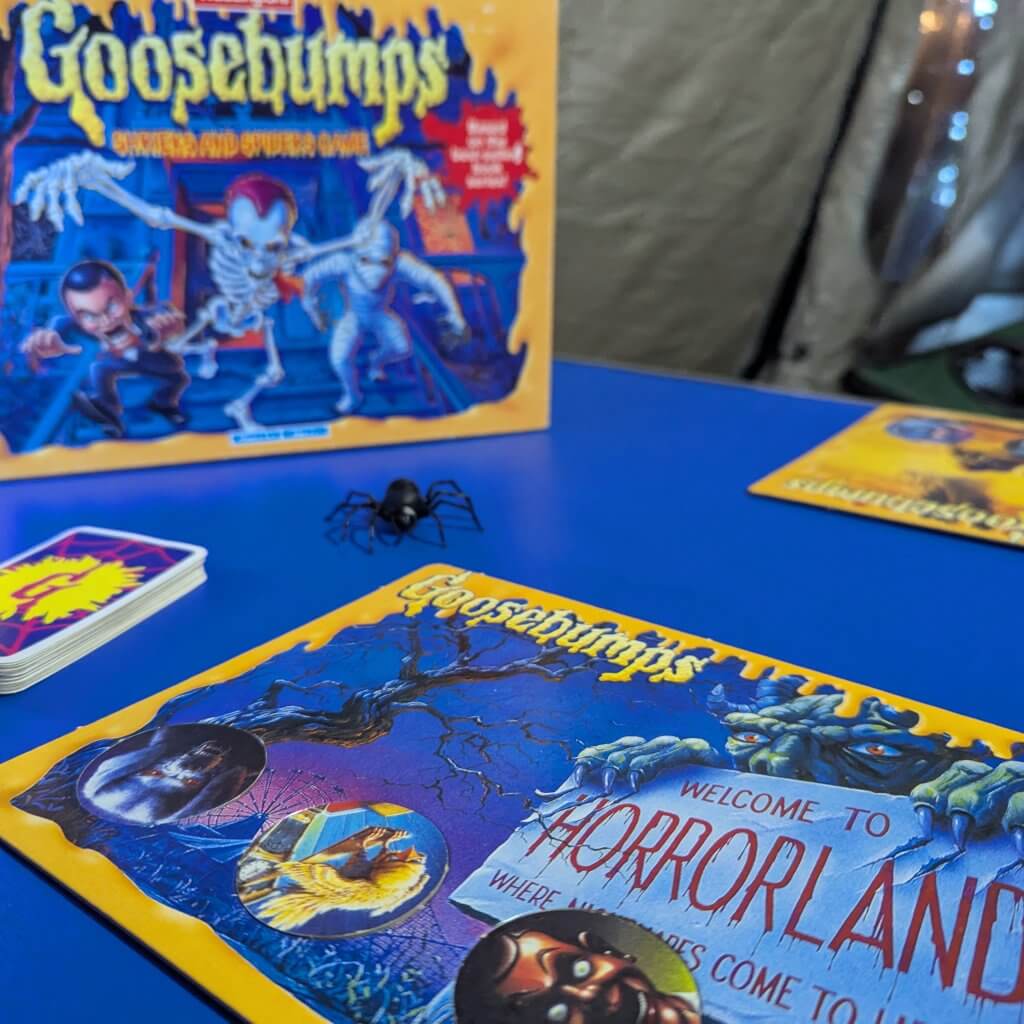
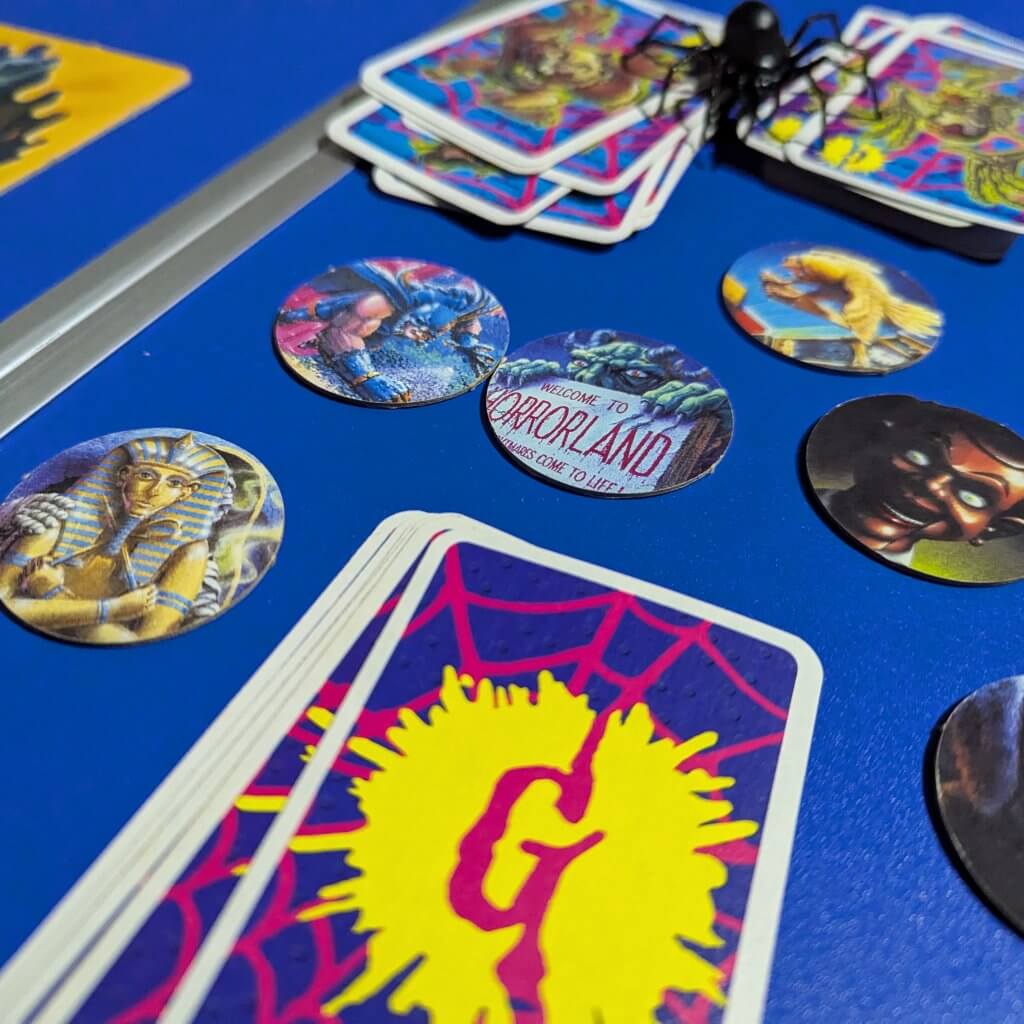
Scoop
Scoop by Waddingtons is from 1955. (Proper vintage!) Race to fill the front page of your newspaper and make sure your stories get approval from the Editor using the special telephone. There are so many things to love about this game:
- All the adverts are based on actual advertisements from the time
- The news stories are complete so one of the joys is reading the stories to everyone as you add them to your paper
- the telephone! once you have enough cards to collect a story you ‘ring’ the editor (slide the dial along and back revealing in the window whether you’ve been successful or not)
Things which are not so loveable is the arbitary payment for the person who fills their page first. This can massively skew the game. It basically means if you finish first you win while the actual win condition depends on you carefully selecting stories to get the most money. Despite that it is a lovely game and a proper slice of history.

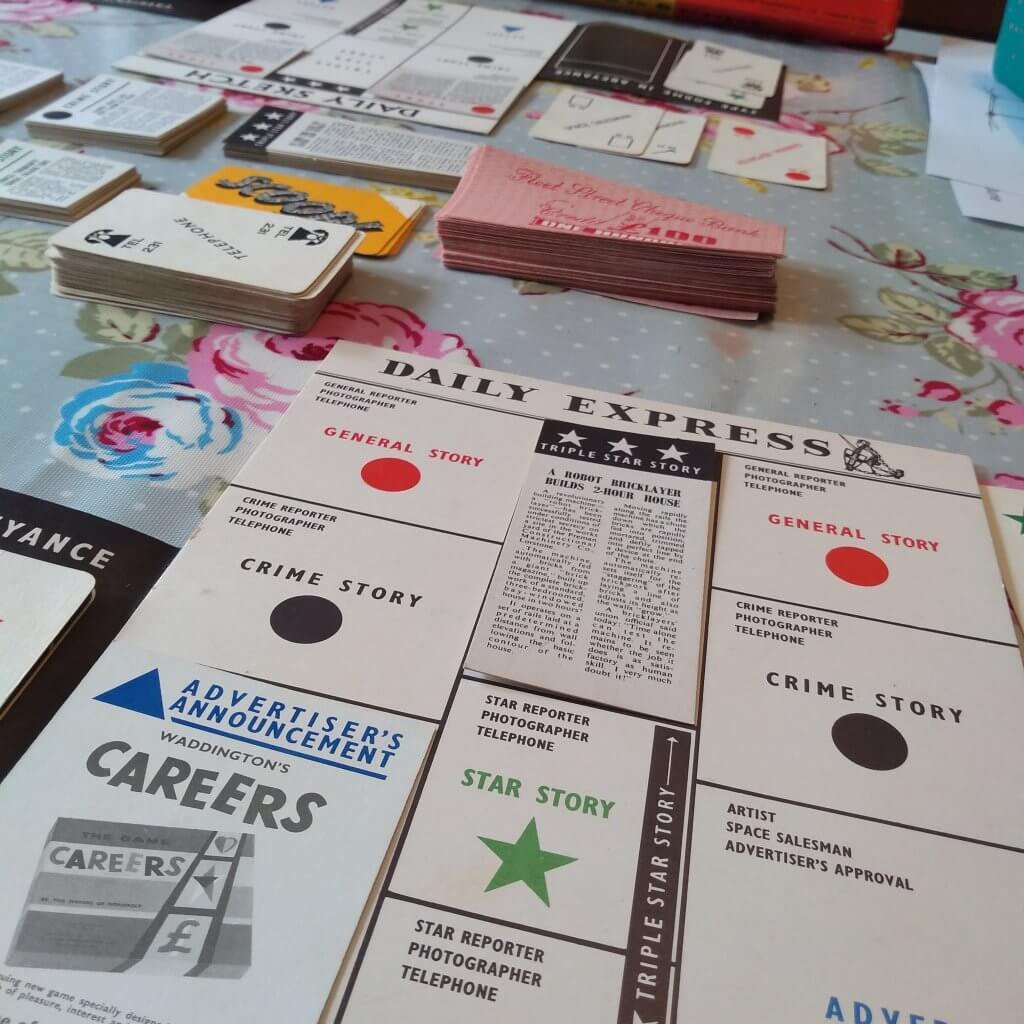
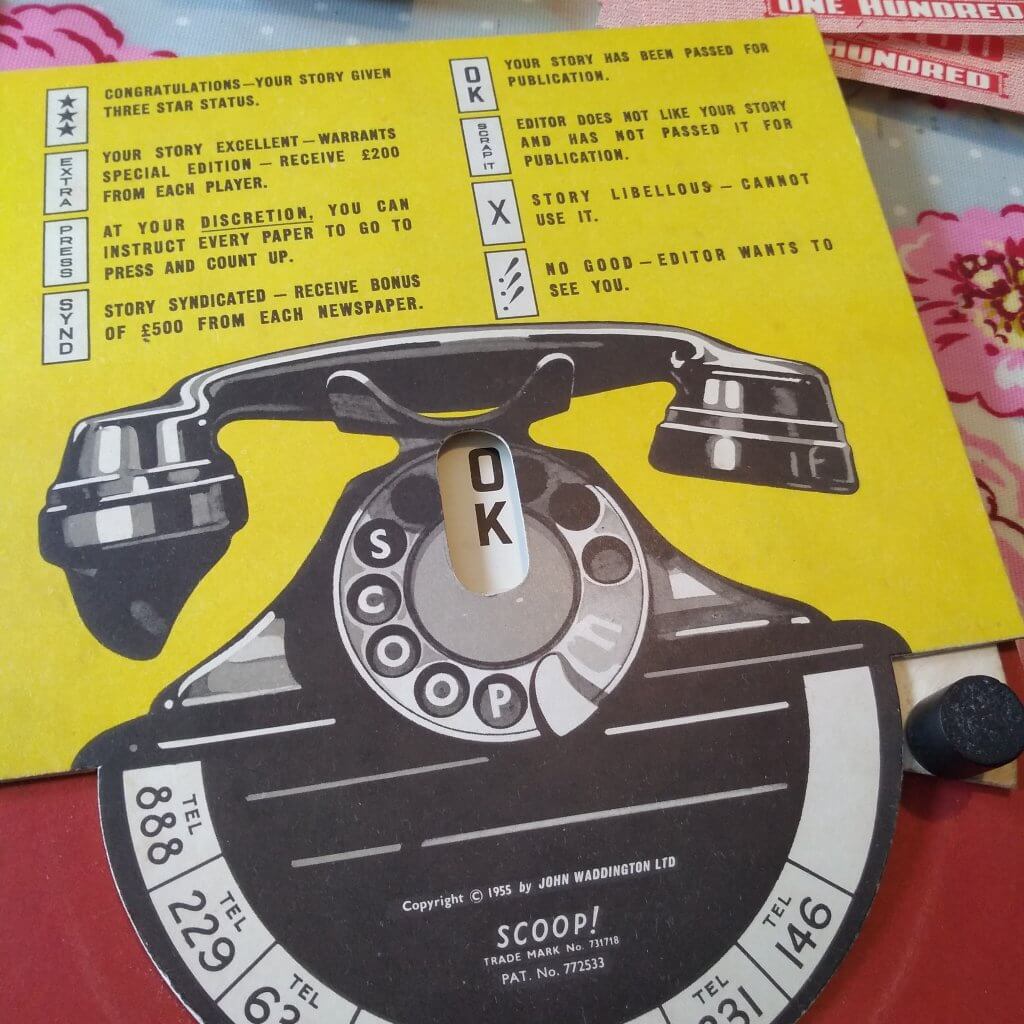
Mastermind (1984)
I had always thought Mastermind was by Invictus games. The copy I had as a child pictured a man who looked a bit like Magnus Magnerson in a black swivel ‘Mastermind’ chair with an attractive woman draped around him. This led me to have completely different expectations of the game- assuming it was a really difficult quiz game. The Waddingtons box cover was much clearer (and less sexist which is always a bonus) showing the game – the multi coloured pegs to make a pattern with and the board. If you have a moment to google Grand Mastermind by Invicta that’s got even more entertaining box art!
To play mastermind, one player makes a pattern with the pegs and hides it behind the screen. The other player then places coloured pegs into the board at the far end. The small black and white pegs are used to indicate only whether a correct colour has been used in the right or wrong place. Using that information the player must deduce over as few turns as possible the combination hidden behind the screen.
It’s basically wordle. There is a word version of it which is much easier than the colour version – I find it too easy given the time it takes to sort and set up.
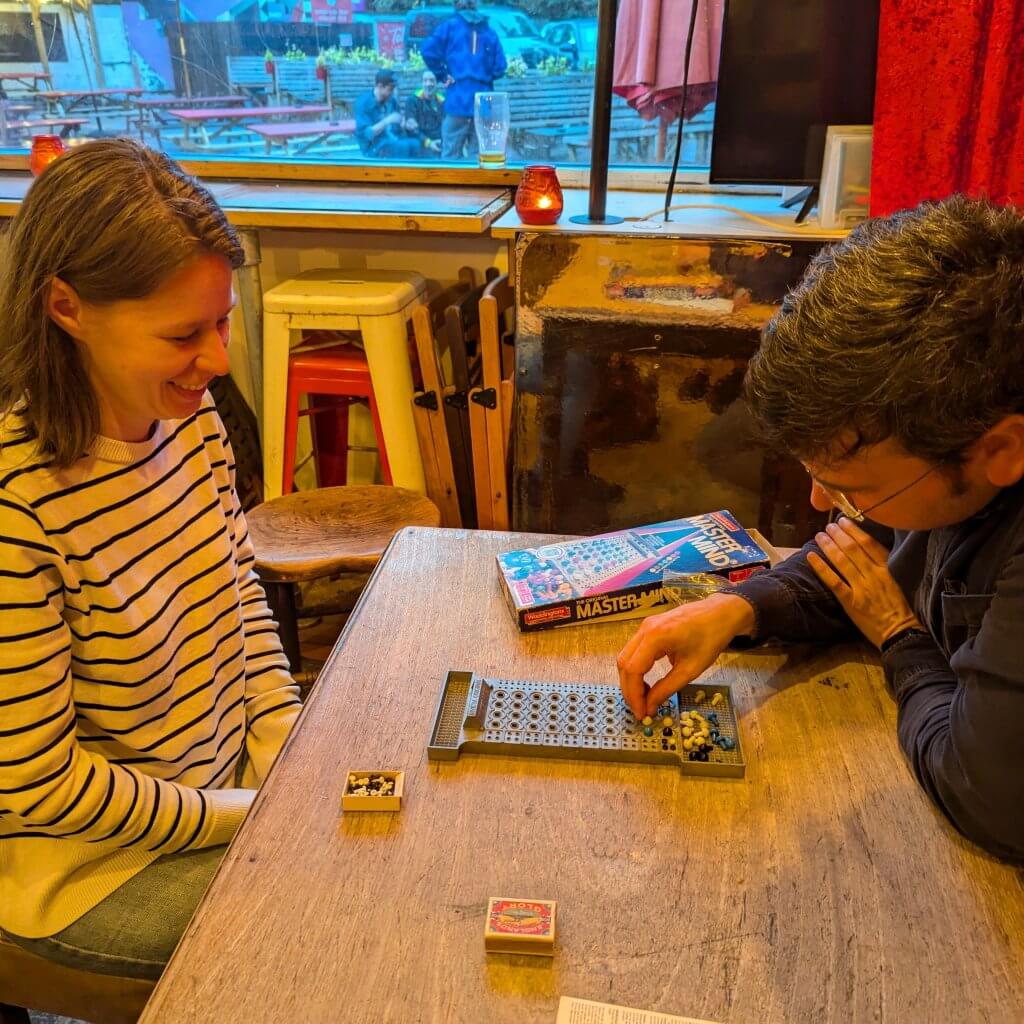
Captain Scarlet (1967)
Captain Scarlet and the Mysterons describes itself as a co-operative game which I was quite excited about as I felt that co-operative games where you work together to solve a puzzle or defeat a common foe were a modern concept.
In the first half of the game you all make your way across Europe in your little cars passing through famous cities like Aberdeen, Maryport, Grimsby and Cardigan Bay (some of which are in the right place on the map). Every so often you land on a space which requires you to read a Mysteron card which invariably impedes your journey. Despite the fact this seems like it should be a race – it isn’t. There is no mention of a win condition nor is there any suggestion of how we are working together to achieve this aim.
But then, once you’ve reached that destination – there’s a second part where you have to get to a different place but this time according to the rules you both do and don’t have to follow a route detailed on the route card you are given. I’m still hazy on the co-operative element and the purpose of all this driving about. It is hilariously bad.
For a long time I had this game with no rules and honestly, part of me thinks it was better that way!
But still, I love the weird quirky map and the odd mysterons cards. House rule it to within an inch of its existence and you might even have a fun game.
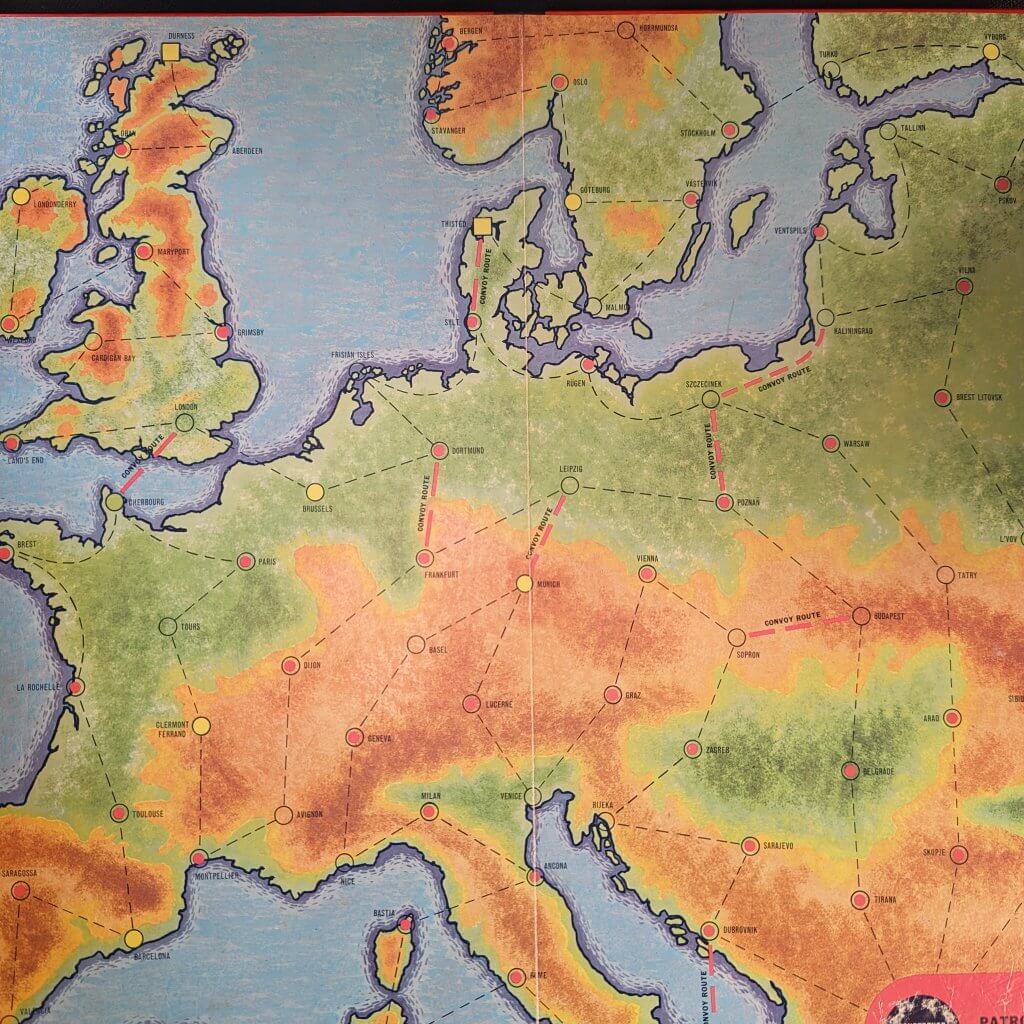


Pit (1909)
My version of Pit is a Parker Bros game, Waddingtons also produced a version of it. Waddingtons and Parker Bros worked closely together. It was Parker Bros who introduced Waddingtons to Monopoly. My copy is from the late 70s (you can tell by it’s gorgeous brown and orange colour scheme) but the game itself has been around a lot longer – it originated in 1909. Based on the trading pit, players shout what they wish to trade and frenetically swap cards until they can corner the market on their chosen crop by collecting a full set. This version comes with a bell which signals the opening and closing of trading. You can also play with the bear and the bull; a wild card and a penalty card.
You can play round by round where you get a winner each time or you can use the scores on the cards to play over a series of rounds. Playing over a series of rounds really ups the ante as you will want to collect higher value cards even if they aren’t the cards in your starting hand.
Either way, there’s a reason you can still buy copies of it today – it’s a fast, fun, noisy game – great for larger groups.

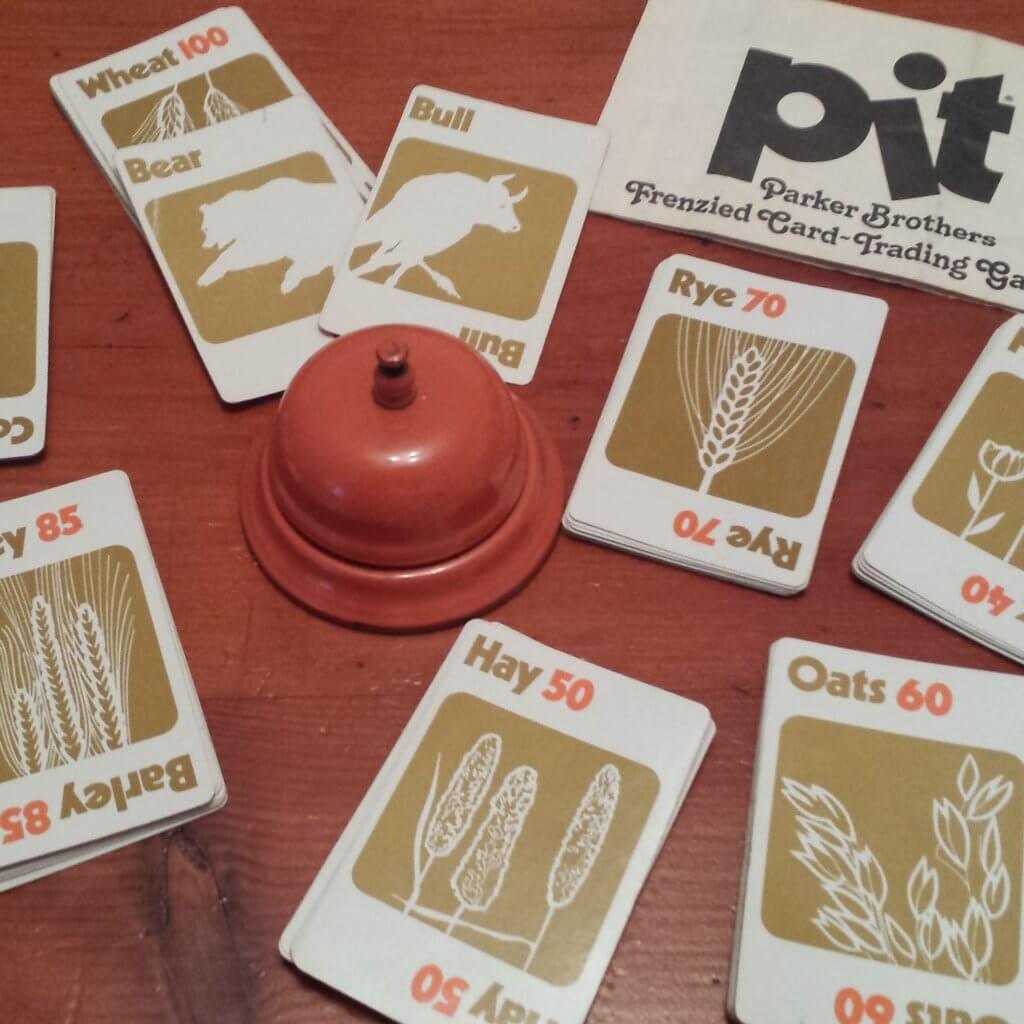
Even in the last few weeks I’ve added some more Waddingtons games to my collection. They produced so many brilliant and iconic games over the years. I’d love more opportunities to bring them along to events – get in touch if you’d like to play any at one of my events.
